All the dry weather this summer has been a mixed blessing for Vancouver Island farmers. Ideal harvest conditions for many crops, but at reduced yields. Any adversity in his fields hasn’t stopped a Saanich Peninsula farmer from growing some unusual crops for this region, as I related to Jo-Ann Roberts this week on CBC Victoria’s All Points West.

Red Lentils
Let’s start with the unusual crops… like chickpeas for a start, and lentils. I’ll get back to the chickpeas in a bit, but if you remember back in May I talked about a marketing push by Saskatchewan farmers to get us eating more lentils. At that time I found out that red lentils are grown right here on the Saanich Peninsula and I was determined to visit the farm this summer. Turns out I called Bryce Rashleigh of Saanichton Farm at just the right time a couple of weeks ago as he was just completing the harvest of the lentils. Bryce is a third generation farmer, his grandfather came to Canada in 1912 and originally settled in Coombs, then Qualicum Beach and finally to Saanichton in 1957. The farm was originally mixed use, and big on dairy, but like many of the other dairy farms on south Vancouver Island, stopped milking cows and Saanichton turned into primarily a farm that grew hay for horses. Bryce told me it wasn’t until the next generation of Rashleighs that the idea of growing grains and lentils came along when his son went to agricultural college: “I had done grains on the farm up until the early 80s, but then we got totally into dairy. And you just do one thing, we just ordered the grain in from Top Shelf Feed in Duncan, and we sold our combine. But now we’ve come back into the local thing again, and that’s where my son came in, he’s got the knowledge on how to run and fix the machines and I’ve got the knowledge of the farms around here (to rent more land to grow grains). We’ve hooked up with some families in Alberta who have been a great help to us, almost like a sister-city kind of thing, every fall I go back to this little town and I’ve learned more and done more.”
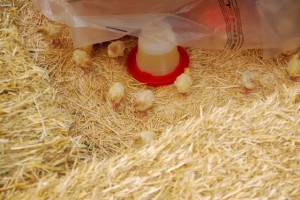
Turkey Chicks
Saanichton Farm is a very busy place. It’s right off of Stelly’s Crossroad, and the first building you see is a large garage, where the many machines used on the farm are repaired and maintained, along with an office where sales of lentils, whole wheat berries and flour is sold. Bryce had just taken a delivery of turkey chicks, so there’s a special enclosure for them, and a larger chicken run. There’s a small hut for packaging of the lentils, and a giant metal and plastic barn containing grain silos, it has a smooth concrete floor where the lentils and other grains are cleaned, sorted and dried before being siloed.
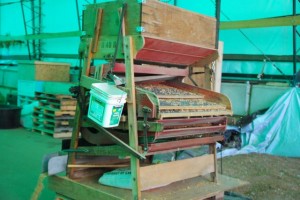
60-year old grain and seed cleaner
Bryce showed me a cleaner and sorter he sourced from a Prairie farm, a wood and metal contraption he figures is about 60 years old and still chugging along. Now, I have never actually seen a lentil plant. And since I got to the farm a couple of days after all the lentils have been harvested, I still haven’t seen one. So I asked Bryce to describe the plant to me and how it is harvested: “The plant is a little bush that grows about 8 inches tall. And it’s a huge challenge because you need to have a level field, and have one where the geese and the deer and the rabbits don’t get into, because they’d totally graze it off, AND you need a flat field that doesn’t have rocks, because you don’t want to pick up rocks in your combine. I’m fortunate enough to use some land where the owners have fenced for deer, so I grow some lentils there. When we combine the field the machine removes the lentils from their pods, one or two lentils per pod, and then we run them through a drying and two cleaning processes before we get them into the bags. With the drought this year we’ve seen a lot of lentils and a lot of the chickpeas with just one seed in a pod.”
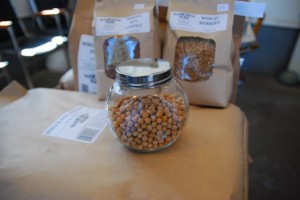
Sum Total of the Chickpea Harvest

This Year’s Chickpea Harvest Turned into Cattle Feed
The dried red lentils are not the hulled and split red lentils we usually buy, they are whole, but you can see they have a reddish tinge under the green. Now to the chickpeas, another crop we don’t associate with Vancouver Island, Bryce and I picked some out of the fields as we wandered through where they had been grown, but later Bryce showed me his entire 2014 harvest of chickpeas. It fit into a tiny jar in his office. This year there were so many weeds infesting the chickpea field he couldn’t really harvest them properly. So he cut them all down and baled them into those big green marshmallows you see in hayfields, everything in there will ferment and then be suitable cattle feed. In the meantime, some of his neighbours combed the field for these leftovers and managed to make a few meals out of them. Bryce isn’t giving up, though, as he just met a retired businessman in Victoria who used to be the largest chickpea processor in the Prairies. He told Bryce he’ll help him choose proper varieties of seed and advise him on growing, so he’ll try chickpeas again next year.
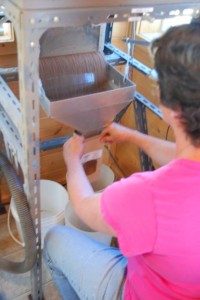
Jill Rashleigh Bagging Lentils
You might be wondering if it’s worth all the trouble to grow these now non-traditional crops on Vancouver Island, but Bryce really believes it is. He is now growing barley which is being purchased by local brewers to make beer with, and there is even a large malting facility being constructed so the barley doesn’t have to be sent off island for malting, and a new grain mill is also coming on line because there are now enough farmers growing wheat and other grains to justify it being built here. Bryce also grows wheat, but he had to send it to Chilliwack to get milled into flour. He says the pendulum is shifting back to the days of mixed use farms, and there is enough public support: “When I grew up, before my grandpa passed the farm down to my father, we had a real mixed farm. You had your grains, your animals, your vegetable garden. You did it all, and now we’ve simple come back full circle to that way of doing things. It’s all local, and it’s been hugely received by the local community, it’s fun to be a part of it, you meet people who are excited to be buying your product and that makes you excited to grow it for them.”
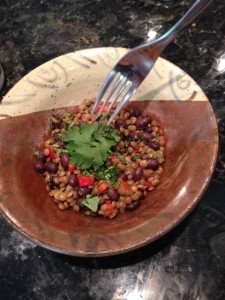
Lentil and Black Bean Salad
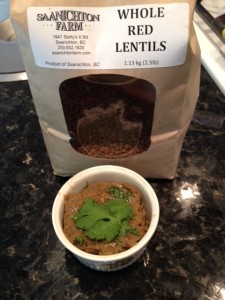
Spicy African Lentil Dip
You’ll find the lentil salad recipe I brought in for Jo-Ann on this page from Saanichton Farm. And here is the link to the African spiced lentil dip from chef Marcus Samuelsson. It makes a lot, so unless you’ve got a big gang of people coming over you might want to cut the quantities in half! Happy cooking…
- Turkey Chicks
- Chicken Run
- Bucket o’ Lentils
- Red Lentils
- Bryce Rashleigh in his Storage Facility
- 60-year old grain and seed cleaner
- Drying the Lentil Harvest
- Silo Brought from Alberta
- Sum Total of the Chickpea Harvest
- This Year’s Chickpea Harvest Turned into Cattle Feed
- Jill Rashleigh Bagging Lentils
- Lentil and Black Bean Salad
- Spicy African Lentil Dip




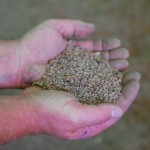
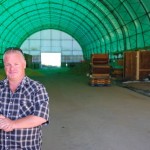
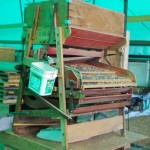

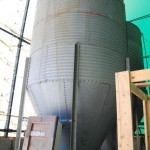
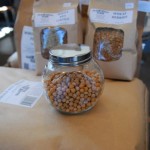

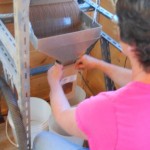

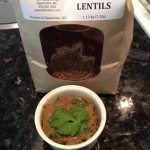
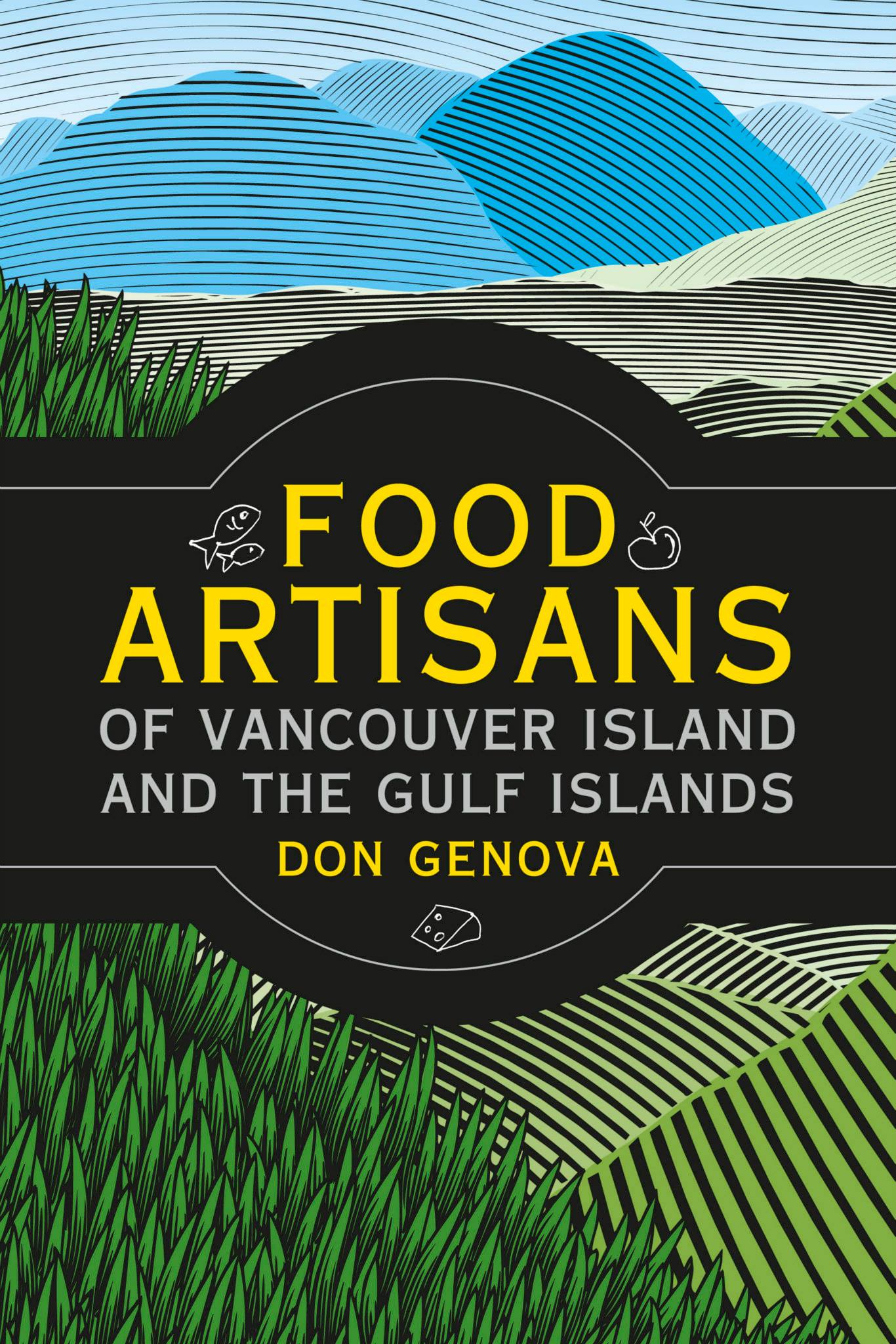

Pingback: Food Matters – Stowel Lake Farm | Don Genova's Blog
For me, legumes are one of the healthiest foods you can possibly find on the market or grow yourselves, if you have a garden at home. What’s more, they are a great substitute for meat, although they may lack certain proteins.
Pingback: Living the Dream Girls | Sailors Small Farm